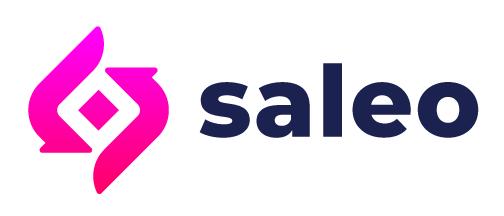Establishing a sales and marketing budget is never easy for SaaS businesses. While there are various ways you can approach this, one option is to set your SaaS sales and marketing expenditure as a percentage of your revenue.
Figuring out how much to spend on sales and marketing as a percentage of revenue in SaaS is complicated. It differs for every business and environment. It’s something you need to establish so that you know how to invest in and scale up your sales and marketing efforts, making it a vital SaaS sales management process.
In this guide, we’ll explore everything you need to know about sales and marketing as a percentage of revenue in SaaS.
Determining Sales and Marketing as a Percentage of Revenue in SaaS
When it comes to budgeting sales and marketing as a percentage of revenue in SaaS, what kind of percentage makes sense?
Sales and marketing as a percentage of revenue in the SaaS industry can vary depending on a couple of factors. These include the stage of the company, your target market, and your overall business strategy.
A typical range for sales and marketing expenses as a percentage of revenue in the SaaS industry is generally between 30% and 60%. The median sales and marketing budget for SaaS companies is 38% of revenue in the last twelve months.
This may seem like an enormous chunk of revenue to put towards sales and marketing efforts. So, how is this justified, and should your business follow the same percentage?
Let’s break this down.
Early-Stage SaaS Companies (30-50%)
In the early stages of a SaaS company’s growth, a significant portion of revenue is often allocated to sales and marketing efforts. This is because new companies need to acquire customers and establish their brand in the market. It costs money to do this.
Early-stage SaaS companies typically spend a higher percentage of revenue, often around 30-50%, on sales and marketing to drive customer acquisition and growth.
Mature SaaS Companies (20-40%)
As SaaS companies mature and gain a more stable customer base, they may reduce their sales and marketing expenses as a percentage of revenue.
This is because they have a stronger brand presence and a loyal customer base. These companies should also have a more reliable organic sales and marketing process in place, which doesn’t require the same kind of investment.
Mature SaaS companies often spend around 20-40% of their revenue on sales and marketing to maintain and grow their customer base.
Enterprise SaaS Companies (15-30%)
Larger, enterprise-focused SaaS companies typically have a lower percentage of revenue allocated to sales and marketing.
This is because they often have longer sales cycles, higher deal sizes, and a focus on retaining and upselling existing customers. As a result, they may spend around 15-30% of their revenue on sales and marketing.
How to Establish a SaaS Sales and Marketing Budget as a Percentage of Revenue?
Establishing a SaaS sales and marketing budget as a percentage of revenue is never straightforward. It involves careful planning around your business goals, growth stage, and market conditions.
Here are a few steps to help you figure out how much to spend on sales and marketing as a percentage of revenue.
Determine Your Business Goals
Start by defining your business objectives.
Are you looking to achieve rapid growth, break into new markets, or maintain steady revenue? Your goals will influence how much you need to allocate to sales and marketing, and what kind of return you can expect from these investments.
Analyze Historical Data
Review your past financial performance to understand how much you’ve spent on sales and marketing in relation to your revenue. This historical data can provide a baseline for your budget.
Consider the Growth Stage
Your growth stage impacts your budget allocation Even if investing in sales and marketing doesn’t make direct sense financially, it can fuel your SaaS business growth for long-term returns.
This is why early-stage SaaS companies often allocate a higher percentage to sales and marketing to acquire customers, while mature companies tend to spend less.
Market and Competitive Analysis
Thoroughly analyze your target market and competition. You’ll need these insights to help you understand what sales and marketing budget your business requires.
Consider the cost of customer acquisition in your industry and region. Greater competitive pressures may require higher spending.
Customer Lifetime Value (CLV) and Payback Period
Calculate the CLV of your customers and the payback period for customer acquisition costs. This helps determine how much you can invest upfront to acquire a customer, and how well this investment will pay off for your business/
Budget Flexibility
Be flexible with your budget. Depending on your goals and market conditions, you may need to adjust your percentage allocation during the year.
Monitor and Adjust
Regularly monitor your sales and marketing performance against your budget. Adjust your spending based on the effectiveness of various strategies and their impact on revenue.
Focus on ROI Tracking
Track the return on investment (ROI) for each marketing and sales channel. Adjust your budget allocation based on what’s delivering the best results.
Conclusion
Remember that there’s no one-size-fits-all approach to establishing a SaaS sales and marketing budget as a percentage of revenue.
It’s a dynamic process that requires ongoing evaluation and adjustment to align with your company’s evolving goals and market conditions.
It’s also important to note that these percentages can vary widely, and there are exceptions based on the specific business model, market dynamics, and competitive landscape of each SaaS company. Companies may temporarily increase their sales and marketing spending to accelerate growth or enter new markets.
Ultimately, the right budget for sales and marketing as a percentage of revenue depends on your specific business environment and requirements. Once you figure out the optimal percentage, you’ll be in a good position to maximize your SaaS sales and marketing efforts.
If you’re looking to boost your sales, consider making use of a sales demo platform. Saleo can help you make the most of your SaaS sales process.





